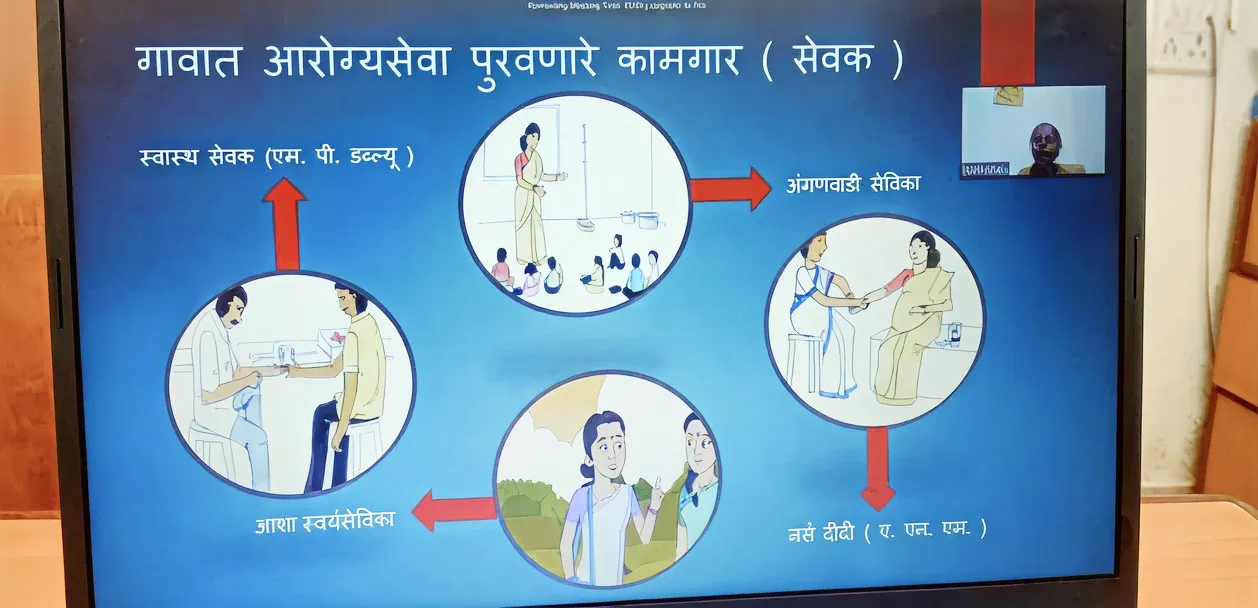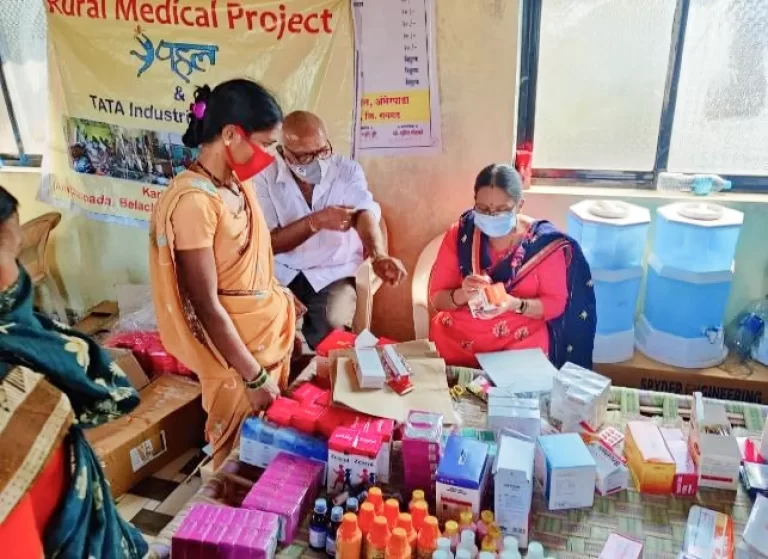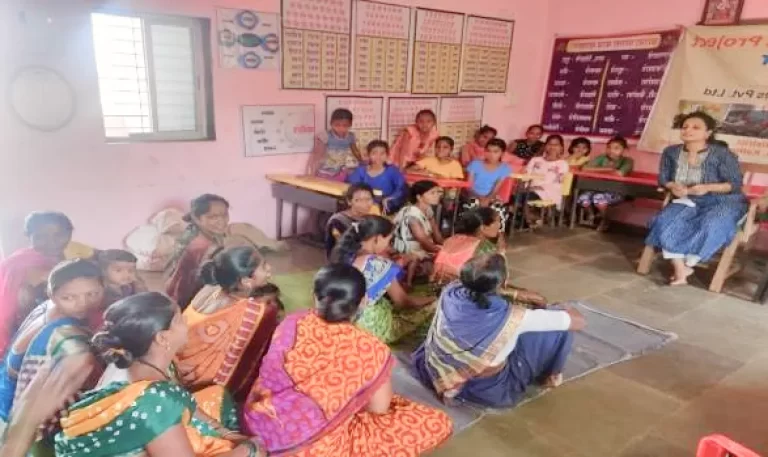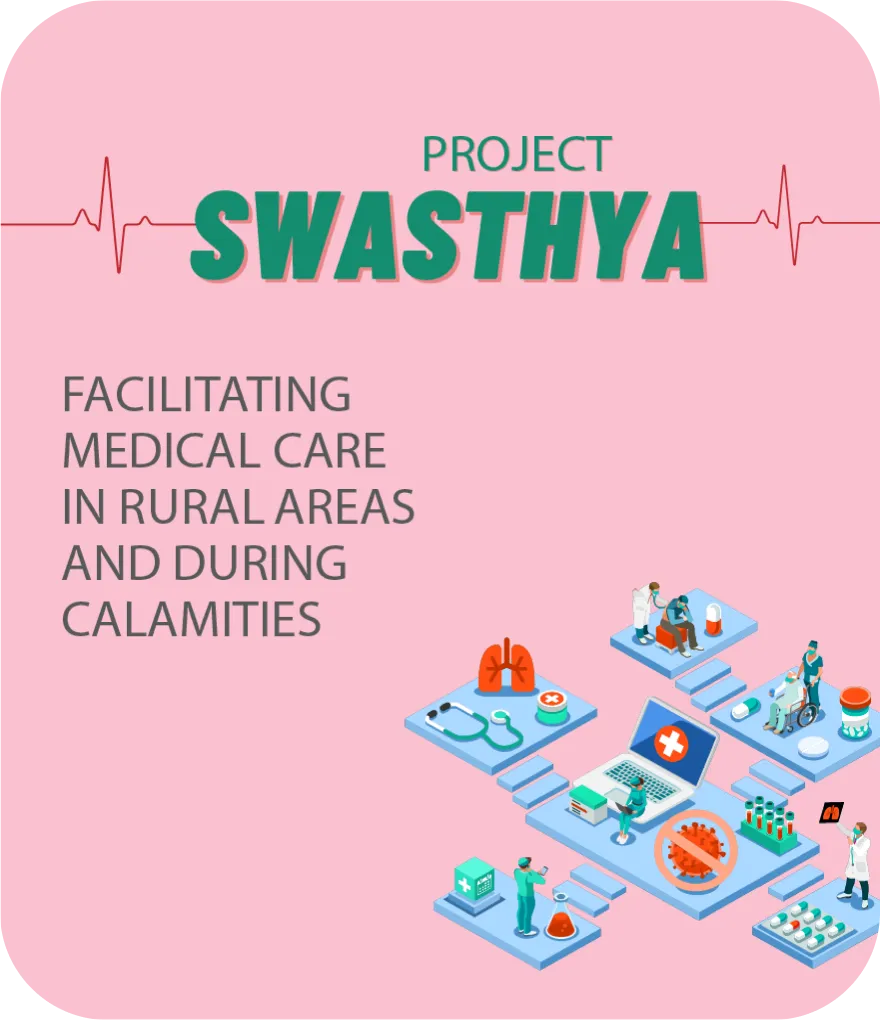Health workers should be made aware about the Information & Function of PHC / Zilla Gramin Rugnalaya. Hence, online training was organized.
Information was provided to the health workers about Primary Health care, ASHA and ANM workers, Anganwadi workers and functioning of health care network in the state. In brief the points covered were:
- Primary healthcare (PHC) refers to “essential health care” that is based on “scientifically sound and socially acceptable methods and technology, which make universal health care accessible to all the individuals and families in a community
- The primary tier is designed to have three types of health care institutions namely, a Sub-Centre (SC) for a population of 3000-5000, a Primary Health Centre (PHC) for 20000 to 30000 people and a Community Health Centre (CHC) as referral center for every four PHCs covering a population of 80,000 to 1.2 lakh.
- The ASHA is trained to work as an interface between the community and the public health system. Notable points about ASHA are as follows:
- Auxiliary Nurse Midwife (ANM) is a resource person for ASHA. They hold weekly/fortnightly meeting with ASHA, and provide on-job training by discussing the activities undertaken during the week/fortnight and provide guidance in case ASHA encounters any problem. ANM also ensures that ASHA gets the compensation for performance and also TA/DA for attending the training schedule.
- Anganwadi Worker (AWW) guides ASHA in performing activities such as organizing Health Day once/twice a month at Anganwadi Centre and orientating women on health related issues such as importance of nutritious food, personal hygiene, care during pregnancy, importance of immunization etc. Anganwadi worker is a depot holder for drug kits and will be issuing it to ASHA.
Each rural hospital has 30 beds, four specialist doctors, nurses and other staff. The rural hospital helps all the primary health centers in the taluka. Therefore, patients come to rural hospitals from all these places. Many types of treatments and some surgeries are performed in rural hospitals. It is expected to have a pediatrician, a gynecologist, a specialist surgeon, and an anesthesiologist. With a well-equipped and fully staffed rural hospital.
Features of the Rural hospitals.
To provide secondary health services to the needy patients in all places to get health facilities in their village.
The following facilities are available at Rural hospitals.
- Outpatient Department
- Inpatient Department
- Maternal and Child Care Department
- Emergency Treatment Room
- Laboratory
- Maternity Hospital
- Surgery Group
- Autopsy Department
- Vehicle Facility (Ambulance)
- Newborn Care Corner
- X – Ray
- Judicial Medical Cases
- Eye Examination
- Family Welfare Surgery
- Vaccination and Family Welfare Facility Counseling and Prevention Allocation
- Health Facilities under National Health Program
- Large and Minor Surgeries
- Blood Supply Center
Main Functions of Primary Health Centers
- Implementing national programs for the health of women and children
- Malaria, Elephantiasis, T.B., Control of diseases like leprosy, blindness, Sexually Transmitted Diseases and AIDS.
- Vaccination against six diseases.
-
Provide healthcare during pregnancy, childbirth, and the postpartum period. Currently, the Government of India has taken initiatives to ensure that all babies are delivered in hospitals rather than at home, promoting safer childbirth and maternal care.
- Medical examination and treatment of school children.
- To treat various ailments.
- Contraceptive services, surgery as well as safe abortion
- Health training for prevention and good health
- Conducting campaigns for diagnosis, treatment and prevention of diseases.
- To provide health services at fairs and weekly market places
-
Doctors at the Primary Health Centre (PHC) treat patients in the Outpatient Department (OPD). Some patients are also admitted to the PHC for further care, usually based on the recommendation of sub-centre health workers. In certain cases, patients are referred from the PHC to a rural hospital or district hospital for advanced treatment.
-
Doctors of Primary Health Centres (PHCs) visit sub-centres and Anganwadi centers under their jurisdiction. Their responsibilities include supervising the work of nurses, visiting villages, and providing medical care to the community.
-
Doctors at Primary Health Centres (PHCs) have several responsibilities in addition to treating diseases. These include attending meetings, conducting autopsies, performing various medical duties, and applying different types of wound dressings. Practical training is also provided through hands-on demonstrations and practice sessions on the proper application of dressings.


 Share
Share
 Tweet
Tweet
 Share
Share
 Share
Share













